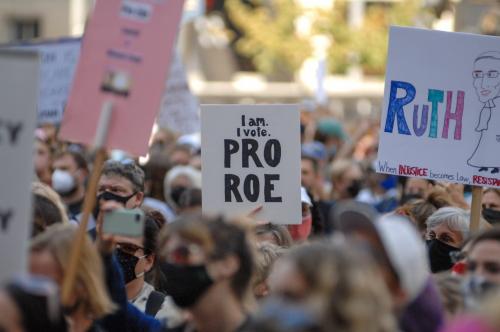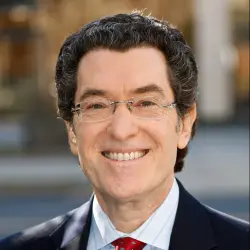In the immediate aftermath of the 2020 presidential election, at least 17 county election officials across six swing states attempted to prevent certification of county vote totals, many citing unsubstantiated claims of voter fraud in an attempt to justify their actions. This widespread effort to block certification in 2020 was unprecedented. Though the attempts failed across the board, contested certifications can potentially sabotage democratic elections around the United States. Interference with certification now threatens to recur in the aftermath of the 2024 presidential election.
The growing risk is in part shown by the trend that emerged following 2020. In 2022, at least 22 county election officials voted to delay certification in key battleground states—a nearly 30% increase from 2020.1 In some instances, these officials constituted a majority of their county’s election board and succeeded in delaying—though not ultimately preventing—certification.2 In the first eight months of 2024, at least eight county officials have already voted against certifying primary or special election results.3
At least 35 current county election officials have a track record of voting against certification, according to a recent report by Citizens for Responsibility and Ethics in Washington. Dozens of new election officials have also been flagged by Public Wise, Informing Democracy, and the Center for Media and Democracy for promoting election denialism or amplifying unsubstantiated claims of voter fraud or irregularities. The sheer number of election skeptics who sit on county election boards in swing states presents a challenge for monitoring certification, especially in remote counties that may be overlooked by the media.
Because the once-obscure certification process has become an area of contestation, it is worth reviewing the basics. State laws set out a procedure for counting ballots and determining which candidate received the most votes. At the local level, a county election board is generally responsible for “canvassing” the ballots cast—reviewing and counting them once the polls close.4 Board members then convene to “certify” the final tabulation of county votes, that is, to officially declare what the vote totals are for the county. Certifying the results is a formality through which the board attests that it has completed a full and accurate canvass of all ballots cast by eligible voters. In all seven swing states, state election provisions establish that the board “shall” submit or certify the tabulation for their respective jurisdictions—language that courts across the country have long interpreted to create a mandatory duty to certify.
County election boards generally have no legal authority to investigate any allegations of fraud or irregularities. State election law provides other checks and safeguards (including audits, recounts, and election contests in court) through which suspected irregularities can be adjudicated. These mechanisms are designed to resolve disputes and ensure the integrity of the outcome. Those who administer them, such as secretaries of state or other officials, have the resources to address these issues. County officials do not, so county-level certification is not the proper mechanism to raise and resolve these concerns.
After the county board certifies their results, the official vote counts are sent to the entity responsible for the statewide canvass and certification. In Arizona, Georgia, and Pennsylvania, the secretaries of state certify the statewide results.5 In other swing states, the statewide count and certification is conducted by a state election body or a combination of state constitutional officers (e.g., the governor, state supreme court justices, and/or the secretary of state).6 These state officials could in theory illegally disrupt certification, but thus far the predominant threats have been at the county level.
County election boards across the seven swing states are generally composed of three to five officials who are either elected or appointed.7 In Arizona, Nevada, and most counties in Pennsylvania,8 the county election board is made up of either the county’s elected commissioners or supervisors, who serve on the board as part of their official duties.9
In other instances, members are appointed through a procedure established in state or county law. In Michigan, for example, the board of county canvassers consists of four members, two each appointed by the county Democratic and Republican committees. In some states, an even partisan balance on county election boards is not guaranteed, as members can also be appointed by the governor, state election board, chief judge of the county court, or other officials. In Cobb County, Georgia, for example, one member of the election board is appointed by each major party’s county executive committee;10 another by the county board of commissioners; and two by the members of the General Assembly who represent the county.
If a majority of elected or appointed members refuse to certify the official results, the statewide certification process is stalled, although some states have workarounds—as we discuss below. Extended delays in county-level certification could run up against or beyond state and federal deadlines for certifying statewide results, potentially leading to a chaotic delay scenario.
Although certification sabotage has not yet resulted in such an extensive delay, there have been many attempts which, if they were to succeed, could inject turmoil into the post-election period. How courts ultimately rule in disputes over county and state certification has the potential to disenfranchise thousands of eligible voters and could determine the outcome in a close election. In 2020, President Biden won Georgia by 12,670 votes. He won Fulton County, Georgia by more than 200,000 votes. Thus, a long delay in the certification of Fulton County’s election results could impact the certification of the winner of the statewide race.
Measures can be taken prior to November to avoid illegal attempts to delay certification. The ACLU of Michigan and two voters have, for example, filed a lawsuit against Kalamazoo County board member Robert Froman, who preemptively vowed not to certify the 2024 results. Within a week of filing, Froman signed an affidavit swearing to certify the final tabulation. Should other county officials similarly suggest that they will not certify the November election results, litigation should be considered against them as well.
Short of litigation, state officials should educate county election board members about the mandatory nature of certification and the potential criminal consequences for failing to fulfill this duty. Secretaries of state and state election agencies should specify in their election procedures that certification is nondiscretionary. State election officials, attorneys general, and district attorneys should issue letters or advisory opinions emphasizing that refusal to fulfill the mandatory obligation to certify election results carries criminal penalties.
If these preventative measures fail to deter election officials from refusing to certify vote totals, there are also retrospective legal remedies available. In all seven swing states, affected parties can petition a court for a writ of mandamus—a court order that compels an official to perform their duty as required by law. If an official refuses to comply with a court order, the court in some states could appoint someone to carry out the certification in their place and could impose contempt penalties. In North Carolina and Michigan, state election officials also have authority to directly intervene if a county board refuses to certify.
Finally, journalists, observers, and concerned Americans, especially in remote, rural, and smaller counties, should ensure that county election board meetings are monitored and that the news of any refusals to certify vote totals are communicated widely. Such vigilance is necessary to ensure that any attempts to delay certification are quickly identified, state and national attention brought to bear, and appropriate remedies applied.
-
Footnotes
- In 2020, there were at least 17 election officials within the seven swing states who voted against certification. These 17 officials were: Ron Gould and Hildy Angius of Mohave County, Arizona; Steve Christy and Ally Miller of Pima County, Arizona; Elizabeth McDowell and Mary Potter Summa of Mecklenburg County, North Carolina; Jeanne Herman of Washoe County, Nevada; Monica Palmer and William Hartmann of Wayne County, Michigan; Alice O’Lenick of Gwinett County, Georgia; the full 5-member board of Coffee County, Georgia; Samuel DeMarco of Allegheny County, Pennsylvania; and Doug McLinko of Bradford County, Pennsylvania. In 2022, there were at least 22 election officials within the seven swing states who voted against certifying primary or general election results. These 22 officials were: Tom Crosby and Peggy Judd of Cochise County, Arizona; Ron Gould, Hildy Angius, and Travis Lingenfelter of Mohave County, Arizona; Steve Christy and Ally Miller of Pima County, Arizona; Anthony Lewis of Dekalb County, Georgia; De Winsor and Timothy Hipp of Esmeralda County, Nevada; Rex Steninger of Elko County, Nevada; Donna Cox of Nye County, Nevada; Jeanne Herman of Washoe County, Nevada; Jerry Forestieri and Timothy DeHaan of Surry County, North Carolina; Alyssa Fusaro and Daniel Schramm of Luzerne County, Pennsylvania; Ray D’Agostino and Joshua Parsons of Lancaster County, Pennsylvania; David Lohr and Scott Dunn of Fayette County, Pennsylvania; and Michael Rivera of Berks County, Pennsylvania.
- For example, in Cochise County, Arizona, a majority of the board initially refused to certify the 2022 general election results, delaying certification until a court ordered them to certify the votes.
- In 2024, there were at least eight election officials from within the seven swing states who initially voted against certification. These eight officials were: Julie Adams and Michael Heekin of Fulton County, Georgia (primary); David Hancock of Gwinett County, Georgia (primary); David Hancock and LeeAnn of the Delta County, Michigan (special election); and Jeanne Herman, Michael Clark and Clara Andriola of Washoe County, Nevada (primary).
- The only exceptions among the seven swing states are in some counties in Georgia and Wisconsin, where there is a single official (a probate judge in Georgia or a county clerk in Wisconsin) who fulfills the same function that the elections boards serve in most other counties.
- In Pennsylvania, the secretary of state is known as the secretary of the commonwealth.
- North Carolina’s state board of elections is the responsible entity. Nevada’s state results are first tallied by the justices of the state supreme court and the secretary of state before they are transmitted to the governor, who ultimately issues electoral certificates. Wisconsin has a six-member (three Republican and three Democrat), nonpartisan state agency called the Elections Commission, which serves as the state body for election certification. In Michigan, the secretary of state receives the certified results from the county boards, but it is the board of state canvassers that ultimately certifies the statewide result.
- There are a few exceptions: In Nevada, the largest counties have seven-member boards, and in some small counties in Wisconsin and Georgia, the “election board” is comprised of a single official.
- The exceptions are Pennsylvania’s seven home-rule counties (Allegheny, Delaware, Erie, Lackawanna, Lehigh, Luzerne, and Northampton), which can alter their county-level election governance structures.
- In Nevada, the county clerk also serves on the election board.
- Generally, this is the two major parties. However, if a candidate from a third party received the most or second-most votes for member of the General Assembly at the preceding general election, that party’s committee would appoint one of the two members.









Commentary
Counting the votes in 2024—What you need to know about certification
October 1, 2024